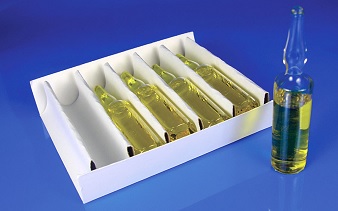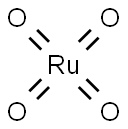Chemical Properties
Ruthenium tetroxide is a golden-yellow volatile solid with an acrid odor, sparingly soluble in water and freely soluble in CCl4, in which it forms stable solutions. In comparison with the analogous compound OsO4, ruthenium tetroxide is a stronger oxidizing agent that reacts violently-resulting in explosion and/or flames-with most common organic solvents such as ether, alcohols, benzene, and pyridine, 1 and also with filter paper.

Ruthenium tetroxide is a clear orange to gold colored solution, It sublimes very easily at room temperature, possessing a melting point of 25.4℃ and a boiling point of 40℃ . While it is very soluble in CCl4 and other nonflammable organic solvents, a saturated solution in water at 20℃ reaches a concentration of 2% w/v.
Uses
Ruthenium tetroxide is an oxidizing agent similar to osmium tetroxide, but more difficult to handle. The solvents normally employed in OsO4 oxidations (ether, benzene, pyridine) cannot be used because of their violent reaction with RuO4. Only CCl4 is recommended.
Production Methods
Ruthenium(VIII) oxide (ruthenium tetraoxide) RuO4 is formed when an alkaline ruthenium solution is treated with a strong oxidant, such as chlorine, or bromate ion when the Ru is in acid solution.
Preparation
Ruthenium tetroxide can be conveniently handled as a carbon tetrachloride solution that is easily prepared by stirring an aqueous solution of sodium periodate NaIO4 with a suspension of hydrated ruthenium dioxide in CCl4. Ruthenium tetroxide partitions between CCl4 and water, resulting in a 60:1 concentration ratio.
Hazard
Fire risk in contact with organic materials.
Toxicity evaluation
Ruthenium tetroxide(RuO4) is a toxic and explosive compound, and, although it is less toxic than OsO4, it must be handled in a well ventilated fume hood using goggles and gloves. It can be destroyed with a sodium bisulfite solution, resulting in the much safer and less toxic ruthenium dioxide, which is a dark insoluble solid with very low vapor pressure.




